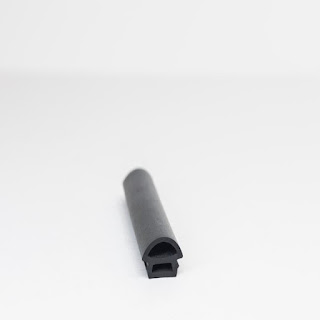EPDM Rubber Seals
EPDM Rubber Seals: Engineered Excellence for Sealing Solutions
Introduction:
EPDM (Ethylene Propylene Diene Monomer) rubber seals are an integral part of countless industrial and commercial applications, offering a superior blend of properties and performance capabilities that make them the go-to choice for sealing and gasketing needs. This extensive and detailed description delves deep into the world of EPDM rubber seals, exploring their composition, physical and mechanical properties, manufacturing processes, wide-ranging applications, and the myriad benefits they bring to diverse industries.
Composition and Structure:
EPDM rubber seals are crafted from a specialized synthetic elastomer compound composed primarily of three key monomers: ethylene, propylene, and diene. This unique chemical makeup imbues EPDM with an array of remarkable properties, setting it apart from other elastomers. The diene component is responsible for cross-linking within the polymer structure, endowing EPDM with excellent heat resistance, flexibility, and resistance to deformation.
Physical and Mechanical Properties:
Excellent Weather Resistance: EPDM rubber seals are renowned for their exceptional weather resistance. They stand up to the harshest environmental conditions, including exposure to UV radiation, extreme temperatures, and ozone, without succumbing to degradation or loss of functionality. This characteristic makes EPDM ideal for outdoor applications, such as in the construction and automotive sectors.
Chemical Resistance: EPDM rubber exhibits outstanding resistance to a wide range of chemicals, including acids, alkalis, and solvents. This resilience ensures their suitability for applications in the chemical and petrochemical industries, where exposure to corrosive substances is commonplace.
Waterproofing Properties: EPDM rubber is highly effective in preventing water ingress, even under high-pressure conditions. This makes it indispensable for sealing applications in plumbing systems, marine environments, and beyond.
Elasticity and Flexibility: EPDM rubber possesses remarkable elasticity and flexibility, allowing it to maintain its structural integrity and sealing capabilities, even when subjected to compression, tension, or cyclic stresses. This property is vital for dynamic sealing applications.
Low-Temperature Performance: EPDM rubber remains pliable and flexible at low temperatures, making it a reliable choice for applications in frigid climates or cryogenic systems.
Longevity and Durability: EPDM seals have an impressive service life, often outlasting seals made from alternative materials. This longevity translates to reduced maintenance costs and extended equipment lifespans.
Manufacturing Processes:
The production of EPDM rubber seals involves a series of precise and controlled processes, including compounding, extrusion, vulcanization, and precision cutting. These processes ensure the creation of seals with consistent dimensions, mechanical properties, and performance characteristics.
Applications:
EPDM rubber seals find diverse applications across a multitude of industries, including but not limited to:
Automotive: EPDM seals are essential components in vehicles, forming seals for doors, windows, hoods, trunks, and sunroofs. Their role in preventing water and air infiltration, as well as noise reduction, enhances the comfort and safety of automotive passengers.
Construction: In the construction industry, EPDM seals are used extensively for weatherproofing windows, doors, and roofing systems. They contribute to maintaining airtight and watertight building envelopes, improving energy efficiency and occupant comfort.
HVAC (Heating, Ventilation, and Air Conditioning): EPDM seals play a pivotal role in HVAC systems by sealing ductwork, pipes, and components. This prevents air leakage, ensuring efficient temperature control and energy conservation.
Industrial Machinery: EPDM gaskets and seals are crucial for industrial machinery, guarding against dust, dirt, and moisture infiltration. They aid in maintaining equipment reliability and prolonging its operational lifespan.
Electronics: EPDM rubber's electrical insulation properties make it an ideal choice for sealing electronic enclosures, safeguarding sensitive components from environmental factors and ensuring equipment longevity.
Chemical Processing: The resistance of EPDM to various chemicals positions it as a preferred material for gaskets and seals in chemical processing equipment and pipelines.
Marine: EPDM seals provide watertight and weatherproof seals for boat hatches, windows, and doors, contributing to the safety and integrity of marine vessels.
Solar Energy: In the realm of renewable energy, EPDM seals find use in solar panels and installations, offering weather resistance and protecting critical solar components from environmental stressors.
Conclusion:
EPDM rubber seals are the unsung heroes behind countless products, systems, and structures, ensuring their functionality, durability, and safety. Their remarkable combination of properties, including weather resistance, chemical resistance, flexibility, and longevity, make them indispensable in an array of applications. Whether you're driving a car, seeking comfort in a climate-controlled space, or harnessing renewable energy, EPDM rubber seals silently and reliably perform their duty, making our lives more comfortable, efficient, and sustainable.

Yorumlar
Yorum Gönder